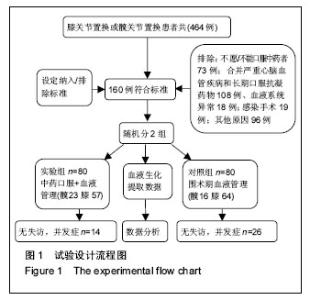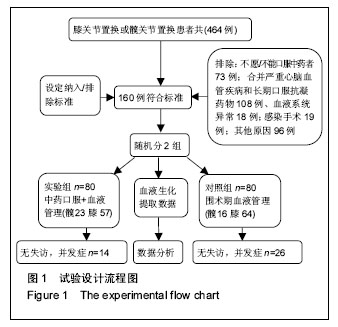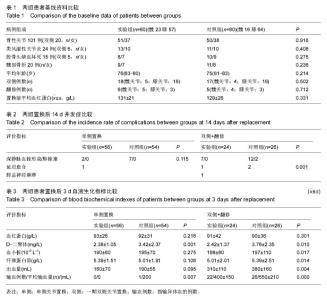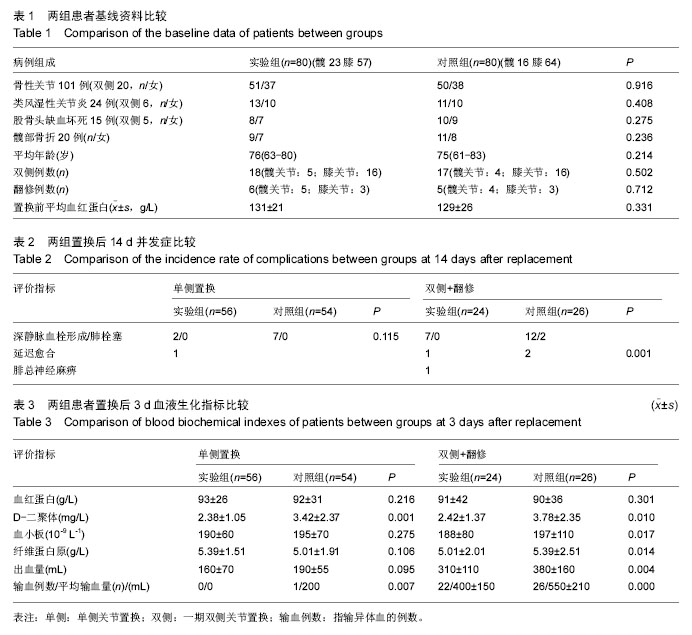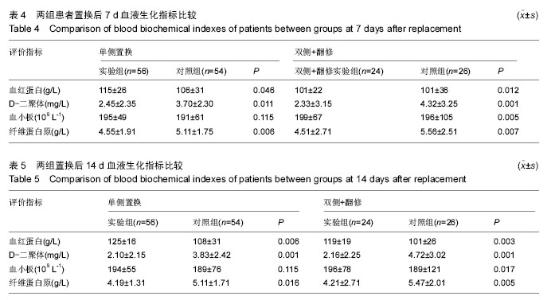| [1] 包杭生,李逸群,沈楚龙.补阳还五汤联合低分子肝素预防股骨转子间骨折术后深静脉血栓形成的临床研究[J]. 广州中医药大学学报,2014,22(1):28-31.[2] 郝阳泉,袁普卫,屈强,等.中药治疗下肢人工关节置换术后深静脉血栓形成30例.中华中医药学会骨伤分会第四届第三次学术年会暨国家中医药管理局“十一五”重点专科(专病)建设骨伤协作组经验交流会论文汇编[C].中华中医药学会骨伤分会,2008. [3] 田昭涛,冯慧远,李惠丽,等.乌司他丁对术后炎症反应和血液高凝状态的影响机制研究[J].中华医院感染学杂志, 201 4,24(4):853-860.[4] 吴家利,洪汉刚,卢勇,等.补阳还五汤防治关节置换术后下肢深静脉血栓形成的疗效研究[J]. 中国中医骨伤科杂志,2008,16(1):19-22.[5] 黄志惠,白玉盛.益气化瘀方联合盐酸川芎嗪注射液治疗过敏性紫癜性肾炎对照研究[J].实用中医内科杂志, 2013, 27 (1):101-104.[6] 王艳红,张程,白玉盛.白玉盛主任医师辨证治疗原发免疫性血小板减少症的思路[J].实用中医内科杂志, 2012, 26 (1):7-10.[7] 美国麻醉医师协会围术期输血和辅助治疗特别工作小组更新.美国麻醉医师协会围术期输血和辅助治疗工作指南.Anesthesiology. 2009,105:198-208.[8] 沈建雄,彭慧明.北京协和医院骨科血液管理的经验与成果[C].中华医学会第十五届骨科学术会议暨第八届COA国际学术大会,北京:2013.[9] Jenny JY,Trojani C,Prudhon JL,et al.Simultaneous bilateral total knee arthroplasty. A multicenter feasibility study.Orthop Traumatol Surg Res. 2013;99(2): 191-195.[10] 李泉,陈崇民.麝香活血散防治股骨骨折术后下肢深静脉血栓形成的临床研究[D].辽宁中医药大学, 2012.[11] 徐世荣,梁忠.中医“血”与现代生理学相关指标关系的临床研究[D].湖北中医学院,2009.[12] 刘金花,徐吟亚,付波.低分子肝素钙对慢性阻塞性肺疾病急性加重期患者血栓前状态的影响. 新乡医学院学报,2012,29(9):680-682,685.[13] 许俊堂,王荣山.血栓相关的血液学指标及其意义[J].中华检验医学杂志,2000,23 (6):382-384.[14] 邱贵兴,戴尅戎.预防骨科大手术后深静脉血栓形成的专家建议[J].中华骨科杂志,2005,25 (10):636-640. [15] 杨熙创,柏龙文,王晓玲.等;髋及股部损伤后下肢深静脉血栓形成[J].骨与关节损伤杂志,2002,17 (1):28-30.[16] 黄树勇,余海波.创伤骨折后血液高凝状态及其干预的研究进展[J].辽宁中医药大学学报,2010,12(10):52-55. [17] Saeki N, Mochizuki S, Fujii T, et al Postsurgical coagulopathy in a hemophilia A patient with inhibitors: efficacy of recombinant factor VIIa.J Anesth.2014 Jan 4. [Epub ahead of print].[18] Chimento GF, Huff T, Ochsner JL Jr, et al.An evaluation of the use of topical tranexamic acid in total knee arthroplasty.J Arthroplasty.2013;28(8 Suppl): 74-77.[19] Banerjee S, Issa K, Kapadia BH, et al; Intraoperative nonpharmacotherapeutic blood management strategies in total knee arthroplasty.J Knee Surg.2013; 26(6): 387-393.[20] Jain S, Wasnik S, Mittal A, et al. Outcome of subvastus approach in elderly nonobese patients undergoing bilateral simultaneous total knee arthroplasty: A randomized controlled study. Indian J Orthop.2013; 47(1): 45-49..[21] Aggarwal AK, Shashikanth VS, Marwaha N. Platelet-rich plasma prevents blood loss and pain and enhances early functional outcome after total knee arthroplasty: a prospective randomised controlled study. Int Orthop.2014;38(2):387-395. [22] Toth PP. Practical management of anticoagulants in family medicine after orthopedic surgery. Postgrad Med. 2012;124(4):206-214. |
